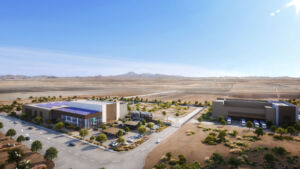Like many industries, senior living looks significantly different than it did 15 years ago. This unique industry is constantly changing due to medical innovations, new technologies, design trends, and most importantly the needs of residents. By analyzing some of the largest shifts in senior living over the past decades, we are able to better understand the current needs and predict where the industry is headed in the future.
MORE NEWS: Ranking Arizona: Top assisted living facilities for 2025
DEEPER DIVE: Want more news like this? Get our free newsletter here
Changes in senior lifestyle
Fifteen years ago, retirement and senior living was perceived and marketed as a time to rest, recover and relax. Now, it is becoming a time for aging adults to connect with new friends, try new things and participate in more activities than ever.
Due to attitudinal changes, senior living communities have adapted and modified their offerings to meet the demands of the newest generation of retirees. They have shifted to offer more experiences, classes, lifelong learning opportunities, resident-lead interest groups, musical entertainment and elevated culinary exploration to name a few.
These lifestyle changes have been proven to support resident socialization, decrease loneliness and isolation, improve cognitive health, enhance emotional wellbeing and reduce stress.

Incorporating all aspects of senior care
One of the biggest shifts in senior health over the last decade is healthcare professionals and senior living experts are taking a more holistic, well-rounded approach to resident care. It is no longer treating the ailments as they come to light, but creating a lifestyle to help residents live a longer, healthier and more independent life.
Senior living communities are providing access to healthy, nutritious meals and opportunities to meet with registered dietitians. Communities are also creating comprehensive fitness experiences for residents. Phoenix-based Sagewood Senior Living offers dozens of fitness experiences to choose from including daily group fitness classes, access to a state-of-the-art onsite gym, multiple personal trainers, and even resident-led athletic groups like a hiking club. There are many ways to get active in retirement and options for all different skill levels.
But a healthy diet and exercise is not the only approach to ensure residents are living longer, healthier lives. There are also more socialization opportunities to ensure emotional wellbeing, lifelong learning opportunities to keep the mind sharp, access to the arts, and mental health practitioners available, in addition to 24/7 access to medical professionals. All this works in tandem to ensure a positive, balanced senior living experience.
Trending towards continuous care
In the last 15 years, Continuing Care Retirement Communities (CCRCs) have increased by 20% and the U.S currently has more than 2,000 CCRCs in operation, according to the National Continuing Care Residents Association. This number is projected to steadily increase as more Baby Boomers retire and seek out a long-term living option.
CCRCs are a type of senior living community that incorporates all levels of care so as residents age in place and need more support, they do not have to leave their homes, friends and familiarity to get the care needed. Most CCRCs have independent living, assisted living, memory care, skilled nursing and long-term/short-term rehabilitation.
CCRCs have high satisfaction ratings from residents and loved ones as seen in survey data from the National Investment Center for Seniors Housing and Care.
This is a trend that will be here to stay for many years to come, continue to grow to meet the demands of an aging population, and increase in popularity as new individuals explore senior living options.
What will senior living look like in the next 15 years?
As the senior living industry continues to evolve, there are a few things we expect to see for the benefit of residents and the industry as a whole.
More residents will opt for an age-in-place model of senior living. This means more people will gravitate towards CCRCs that cater to a long-term commitment.
There will be more incorporation of technology in senior living. Many communities have already started to add smart home technology in resident homes, streamlined medical care through virtual platforms, and dining spaces with digital technology.
Care plans will also continue to become more tailored to the individual needs of each resident. This is a shift we are already seeing but in the next 10-15 years, it will become the standard model for senior living. Customized care plans are ultimately what is best for each resident and it will become a requirement as individuals select their future homes.
Sagewood is celebrating its 15-year anniversary in 2025 and has helped mold and update the senior living in Phoenix. Monumental changes and shifts have been made in the last fifteen years, and we will continue to grow and adapt to ensure continued success of the senior living industry as a whole, especially in the Valley of the Sun.
Author: Michael Dobbs is the director of marketing and sales at Sagewood Senior Living.




